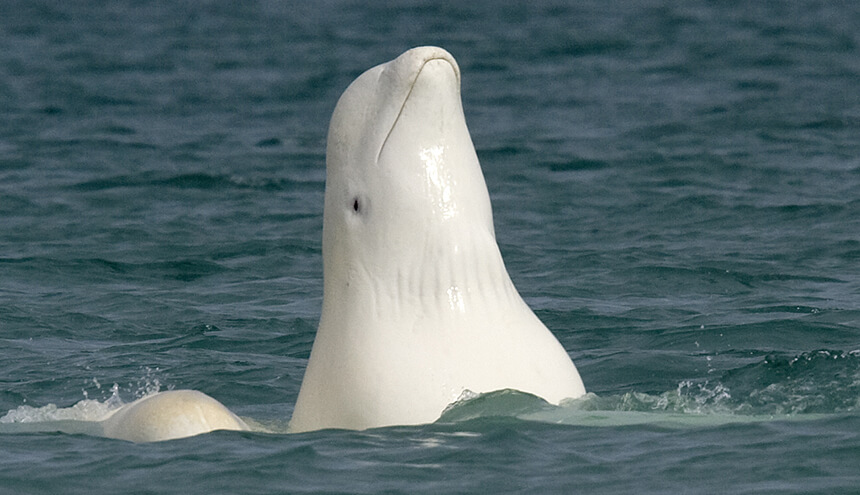- The Name Beluga comes from a Russian phrase meaning ‘white one’ .
- Found mostly in the Arctic Ocean, there are thought to be around 150,000 Beluga Whales in the world.
- Beluga whales are very sociable and live in groups called pods.
- A single pod can consist of hundreds of wales
- They are often referred to as ‘the canary of the sea’ as they are noticeably vocal, making clicks, grunts, chirps and whistles as they communicate with each other.
- An adult beluga whale is from 13 to 20 feet in length, the females are usually smaller.
- An adult beluga whale can live for up to 50 years.
- A beluga whale can weigh up to 3000 pounds
- About 40% of their bodyweight is blubber, which helps them to stay warm and preserve energy in the icy water.
- They can dive as deep as 1000 metres
- They can remain underwater for up to fifteen minutes before surfacing to breathe.
- Their white colour allows them to hide from predators (orcas and polar bears) by blending in with the floating ice in their natural environment.
- They do not have a dorsal fin, which makes swimming, and hunting under the ice easier.
- When they are born, they are a grey/brown colour and don’t become fully white until they reach around 13 years old.
- The pronounced lump on their heads is called the ‘melon’. It is thought to account for their ability to pick up and interpret sound waves.
- Technically referred to as ‘echolocation’, picking up and interpreting these sound waves allows them to locate holes in the ice, find prey and evade predators
- Unlike most whales, the beluga’s vertebrae are not fused. This means the whales have unusually flexible necks and can turn their heads in all directions.
- Their closest physiological relative is the Narwhal
Check out our expedition cruises to the arctic here
 A Close Look At Beluga Whales
A Close Look At Beluga Whales
